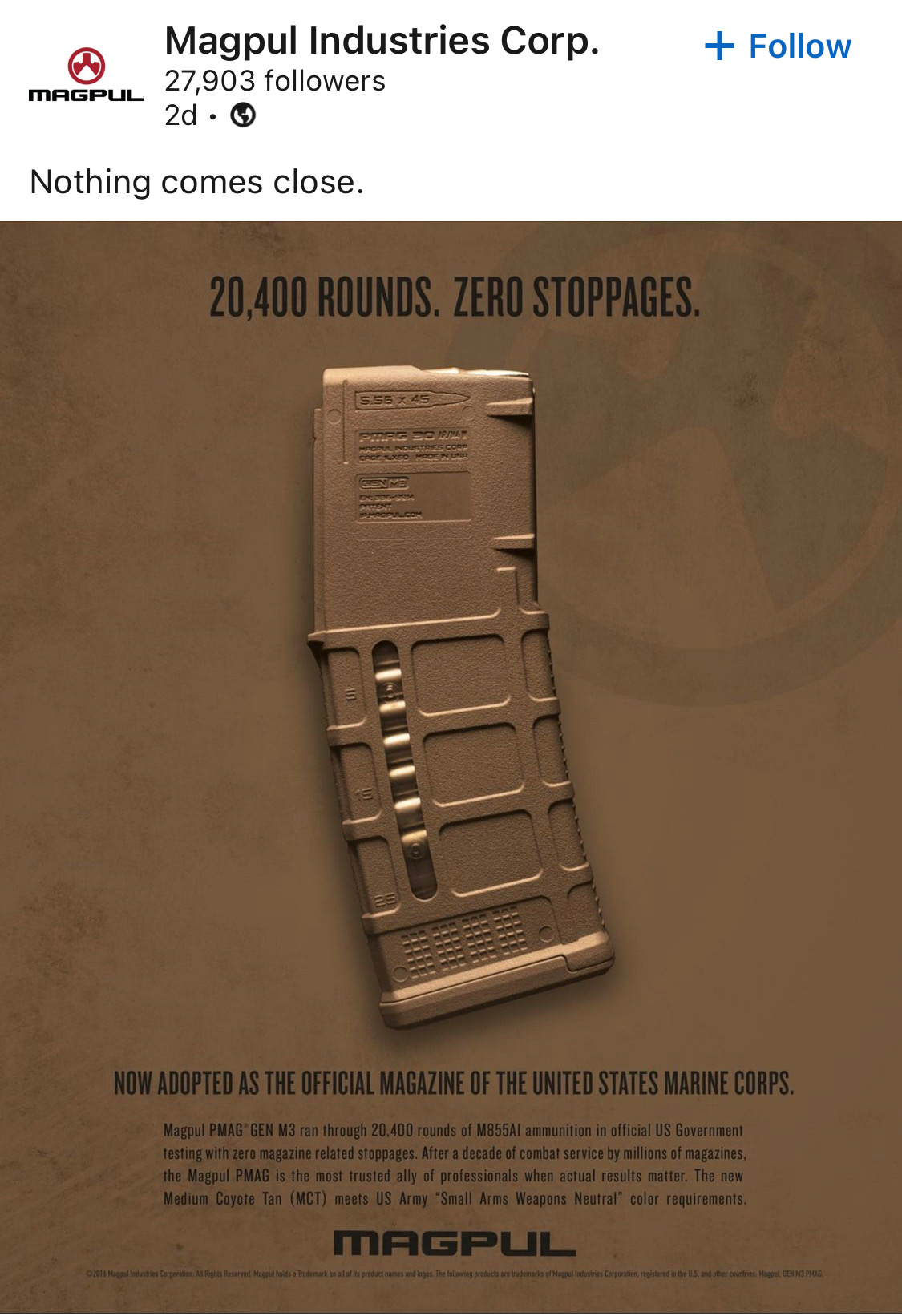
Most new business owners in the firearm industry come from backgrounds other than business or marketing (engineering, training, finance, healthcare, etc.). When it comes time to discuss firearms marketing, most will avoid the subject—because, after all, how many engineers studied marketing in college?
In light of this fact, you may be feeling anxious to do some “sort of marketing,” but you’re not sure what that “sort of marketing” is.
Should you buy a banner ad on Outdoor Wire, develop a full-fledged content department like Springfield Armory, sponsor a woman-focused group like the Well Armed Women, pay $30,000 to go to SHOT show—and what about Facebook and Instagram?
Before you get to the part in your business that requires you to spend some money on marketing—there are four questions you need to ask to ensure that when it does come time to invest in marketing—it will work.
1. Solve a problem that has mass appeal
If you look at the biggest companies and brands in the world, they all have one thing in common—they solve a problem that everyone has: computing (Apple), fast food (McDonald’s), transportation (Ford), fast consumer goods (Amazon). Or they have improved upon an outdated product (coolers) that everyone has to have (Yeti)—or they have brought to market a better product like Magpul’s polymer magazines.
Question: What is the #1 problem your product solves? Find that problem or unique difference and solve it.
2. Quality is job #1
A quality product that is reliable and durable is only the starting line (table stakes) in this industry. If you can’t do that, you need to go back to the drawing board.
According to a leading manufacturer rep, I had the opportunity to talk to the other day stated, “if word gets out on the street, you have a good product—the product will sell itself, just stay out of your own way.”
Question: Is your product of high quality and has it been thoroughly tested?
But this is still not enough—there are two other factors that form the basis of successful marketing—and that is timing and price. If the time is not right for your product, it can suck the life out of your business.
3. Is the timing right?
A recent example of hitting the market at the right time is the Maxim 50 by SilencerCo. The Maxim 50 solves a huge problem everyone has: hearing loss and hunting in States where only shotguns and muzzleloaders are allowed.
According to Williams Mullen’s firearm industry practice group, “The Maxim 50 and its permanently attached silencer is not considered a firearm or a suppressor under the NFA. Individuals looking for a hearing safe gun, whether for hunting, collecting, or recreational shooting, can now purchase one without having to go through the ATF’s burdensome registration process, which requires certain law enforcement checks, fingerprints, law enforcement notifications, a multi-month waiting period, and a $200 tax stamp paid directly to Uncle Sam.”
By integrating the silencer into a muzzleloader platform, SilencerCo. was able to solve a major problem in the market at the perfect time, earning massive industry attention. Upon the product’s release, SilencerCo’s website crashed due to the massive response.
Question: Is the timing right? What trends will fuel your marketing efforts?
4. Is it priced right?
If you can’t achieve good margins on your product, or if you extend yourself by going to market with several products (instead of just one or two), you might be heading down a black hole where there is no return.
According to Entrepreneur, no matter what type of product you sell, the price you charge your customers will have a direct effect on the success of your business. Though pricing strategies can be complex, the basic rules of pricing are straightforward:
- All prices must cover costs and profits.
- The most effective way to lower prices is to lower costs.
- Review prices frequently to assure that they reflect the dynamics of cost, market demand, response to the competition, and profit objectives.
- Prices must be established to assure sales.
A new resource in the industry you may not have heard about is Gun Broker’s Pricing Report. Gun Broker offers access to National Firearm Pricing and Trends to help you understand how to best price your firearms and accessories. GunBroker.com boasts 6 million unique monthly visitors a month and conducts over $3 Billion in cumulative merchandise sales.
What about sales and distribution?
For most startups and growth-phase manufacturers, distributors typically won’t take you on until you have a sales record. The exception is, of course, you have a breakout product – like the Hudson H9. However, they failed due to lack of planning. So start with the above—develop a winning marketing strategy—and in time—and with some sales hustle, you’ll have distributors taking note. (Good thing Daniel Defense bought the patent and picked up where they left off, but reviews still remain mixed.)
5. Count the cost to achieve your goals
Every year, I talk with numerous new business owners who invest in a storefront, acquire tools and materials, source OEMs, and even construct a website—only to discover they lack a strategic approach to marketing the business. It’s crucial to consider marketing and sales right from the outset. Building it alone won’t guarantee customers will come.
Question: What is it going to take to grow this company after I build it?
In conclusion, by solving a problem that has wide appeal, building a quality and thoroughly tested product, launching at the right time, pricing your product accordingly and counting the cost to achieve your goals will help make your business more successful. Talk to a firearms marketing agency to learn more.








